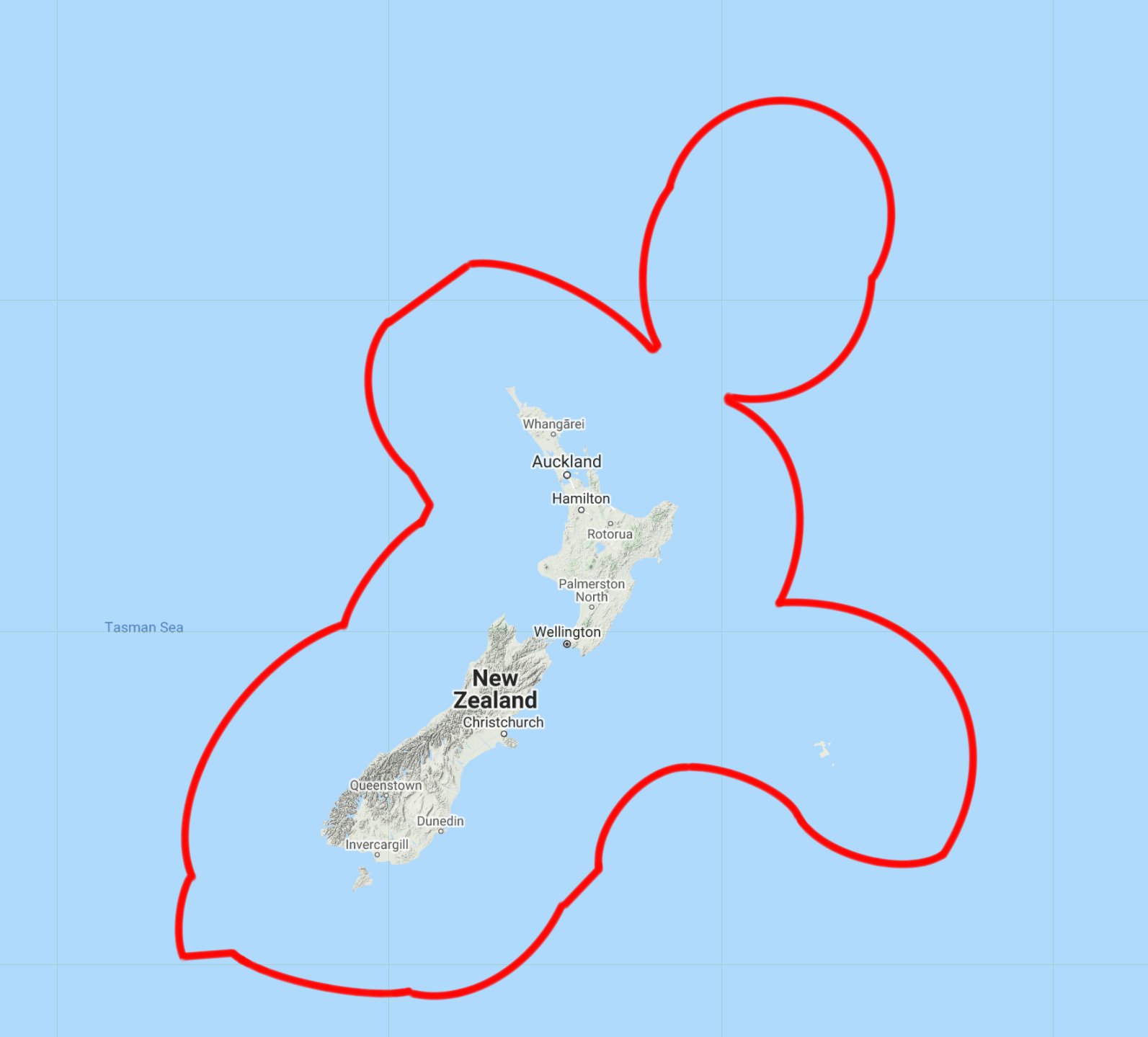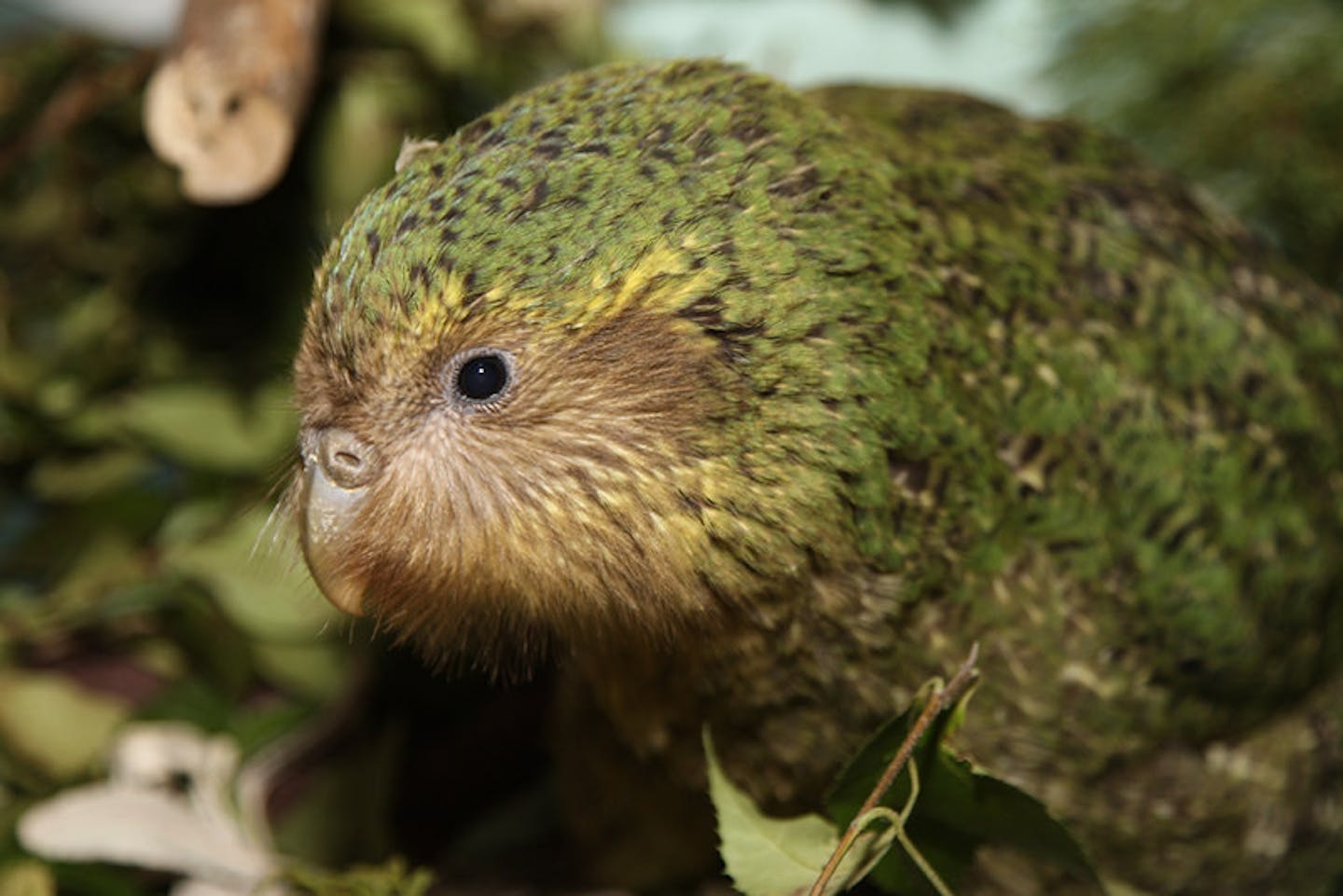Kakapo: a brilliant green feathered bird that resembles a Muppet
Our “Species of the Week” series highlights the flagship species of each of the 844 unique ecoregions contained within Earth’s bioregions.
Emerging from the thick ferns of New Zealand’s rainforest is a species that could pass as a one of Jim Henson's Muppets. With brilliant green feathers that turn into a circular puff of cream around the face, beady purple eyes, a pronounced grey beak, and large feet, the kakapo is an amusing sight to behold. Upon further inspection, how un-birdlike this bird really is, becomes quite comical.

The kakapo is the flagship species of the Rakiura Island Temperate Forests ecoregion, located in the New Zealand bioregion (AU01).
First, their Big Bird-like feet clomp around the forest floor because kakapos cannot fly. It is the world's only flightless parrot in part due to that it is also the world's heaviest parrot, weighing in just shy of 9 pounds. Potentially, it holds the third title as one of the world's longest-living birds with reports of lifespans of up to 100 years. Kakapos continue their avian oddness with being nocturnal, waking up just as the sun is setting. Using the whiskers around its face to feel in the dark, the kakapo uses those large feet to climb trees to search for food. Among its favorites are the seeds of the rimu tree, a large coniferous evergreen, also endemic to the forests of New Zealand. Rimu trees are thought to play an important role in their relationship to kakapos as the parrots only reproduce when there is a large yield of crop.
Breeding slower than any other bird, kakapos mate once every four to five years. They are also the only flightless bird to have a lek breeding system in which the males openly compete for the females’ attention. Males battle one another in an array of wings, beaks, claws, and loud screeches. Calls out to the female can also be heard at night echoing throughout the ferned forest.
These low grunts or "booming" calls last 6–8 hours every night for more than four months. Females choose their mate and lay 1–4 eggs over the span of a few days. After thirty days the eggs hatch and chicks become independent around 10 to 12 weeks of age.
Historically, the kakapo has been meaningful to Māori, the indigenous people of New Zealand, occurring in many of their oral traditions and folklore. Today, the kakapo is critically endangered with a total known population of 209. Each of these adult kakapos is named, tagged, and conserved on four predator-free islands off the coast of New Zealand.


